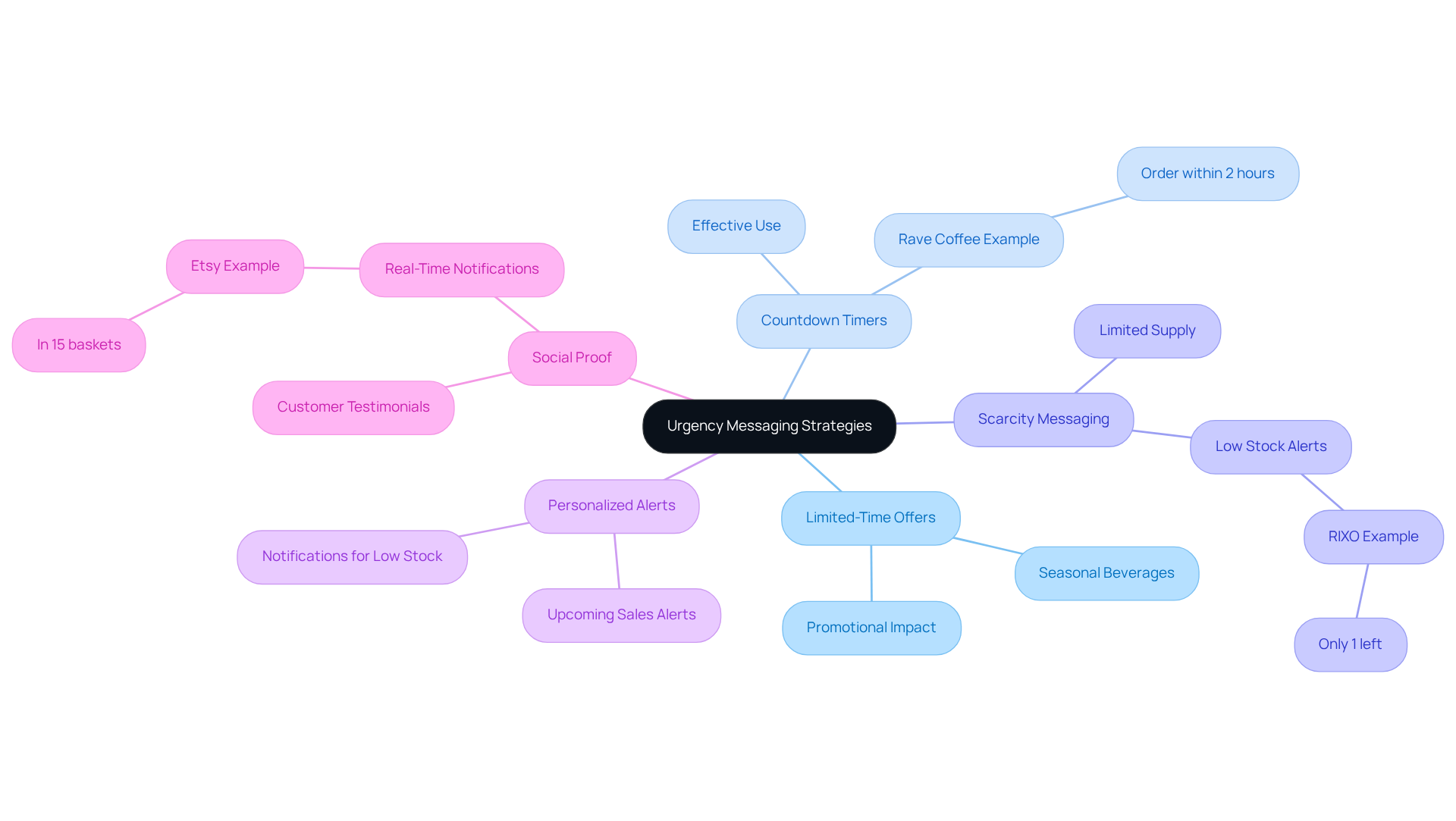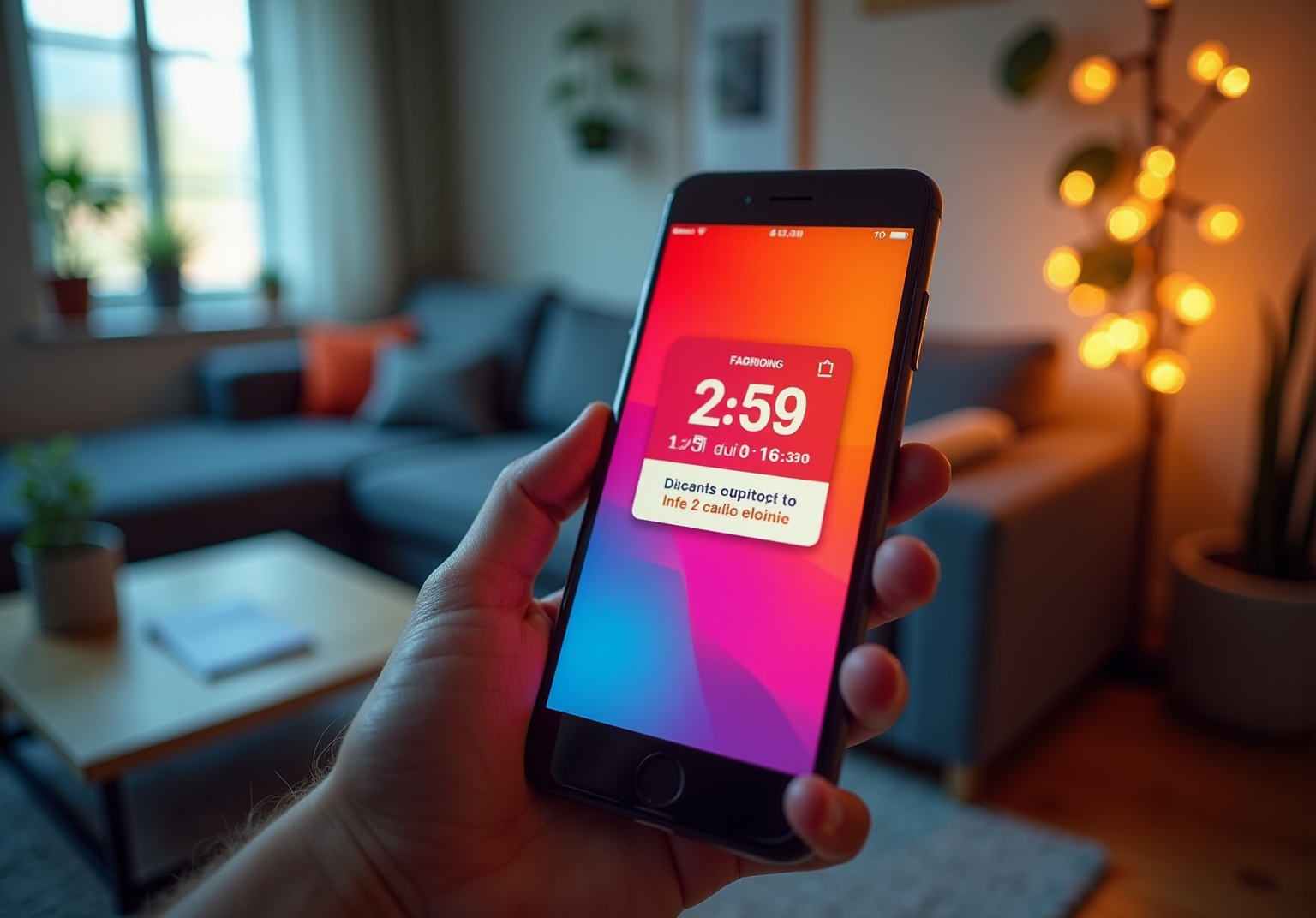
Overview
Urgency messaging stands as a pivotal marketing strategy for direct-to-consumer (DTC) brands. Its power lies in prompting immediate purchasing decisions through techniques such as limited-time offers and scarcity messaging. This approach not only captures attention but also drives action, making it essential for brands aiming to boost their sales.
Research and case studies reveal that urgency messaging can significantly enhance conversion rates and customer engagement. For instance, brands that implement these strategies often see a marked increase in sales, as consumers respond to the psychological triggers of urgency. By creating a sense of scarcity, brands can effectively motivate customers to act quickly, thereby fostering brand loyalty.
To illustrate, consider the success stories of various DTC brands that have leveraged urgency messaging. These case studies provide compelling evidence of how such strategies can transform consumer behavior and elevate brand performance. The data speaks volumes: brands that utilize urgency messaging not only drive immediate sales but also cultivate long-term relationships with their customers.
In conclusion, urgency messaging is not just a tactic; it’s a vital component of a successful marketing strategy. By understanding and implementing these techniques, DTC brands can enhance their conversion rates, engage customers more effectively, and ultimately drive sales while building lasting loyalty.
Introduction
Urgency messaging has become an essential strategy for direct-to-consumer (DTC) brands, driving consumers to make quick purchasing decisions through techniques that inspire immediate action. By tapping into psychological triggers like fear of missing out (FOMO) and scarcity, brands can significantly boost their conversion rates and cultivate customer loyalty.
However, how can DTC companies effectively balance the power of urgency messaging with the potential risk of overwhelming their audience? This article explores the intricacies of urgency messaging, delving into its psychological foundations, successful implementation strategies, and real-world case studies that illustrate its profound impact on consumer behavior.
Understanding the delicate interplay between urgency and consumer perception is crucial. As we navigate this landscape, we’ll uncover actionable insights that empower brands to harness urgency messaging effectively, ensuring they not only drive sales but also foster lasting relationships with their customers.
Define Urgency Messaging and Its Importance for DTC Brands
Urgency messaging is a powerful marketing strategy designed to instill a sense of immediate action among consumers, prompting quick purchasing decisions. Techniques such as limited-time promotions, countdown clocks, and low inventory notifications are commonly employed in urgency messaging to create this sense of urgency. For direct-to-consumer (DTC) businesses, effective communication is crucial, leveraging psychological triggers like fear of missing out (FOMO) and scarcity, which can significantly enhance conversion rates.
Consider the case studies from Parah Group, which illustrate the effectiveness of time-sensitive communication strategies. By gamifying the progress bar for free shipping limits and highlighting low inventory levels, they achieved a remarkable 35% increase in conversion rates for a $30M clothing label and a staggering 90% rise in average order value (AOV) for a cannabis company. Research further supports this approach, indicating that addressing customer procrastination and building trust can lead to an 18% increase in revenue per visitor and a 16% boost in conversion rates.
By implementing prompt messaging effectively, companies not only drive sales but also cultivate customer loyalty, as consumers appreciate being part of exclusive opportunities. This strategic method of urgency messaging can convert hesitant shoppers into decisive buyers, ultimately enhancing the profitability of DTC brands. Additionally, employing warm hues like red, yellow, and orange can amplify the sense of immediacy in marketing efforts, as these colors are often associated with action and excitement. However, it is vital to use these tactics judiciously to avoid overwhelming customers.
As Alicia, a seasoned copywriter, aptly notes, fostering a sense of necessity can transform even the most reluctant individuals into clients who act swiftly.

Explore the Psychology Behind Urgency Messaging
The psychology of urgency messaging is rooted in several critical concepts, particularly FOMO (Fear of Missing Out), loss aversion, and the mere time pressure effect. FOMO compels individuals to act swiftly to avoid missing perceived opportunities, while loss aversion underscores the discomfort associated with losing something valuable. The basic immediacy effect demonstrates that simply presenting an offer as urgent can lead individuals to prioritize it over other options.
DTC brands can effectively harness these psychological triggers through urgency messaging that emphasizes limited availability or time-sensitive discounts, motivating prompt buyer action. For instance, phrases like "Only 3 left in stock!" or "Sale ends in 2 hours!" serve as persuasive prompts, instilling a sense of urgency and increasing the likelihood of conversion. Research indicates that nearly 40% of millennials have incurred debt due to FOMO-related purchases, underscoring the profound impact of urgency messaging on consumer behavior.
Moreover, successful time-sensitive strategies can be observed in case studies of companies like Glossier, which utilizes limited edition releases to generate anticipation and pressure without resorting to manipulation. Parah Group's collaboration with various DTC labels further illustrates the effectiveness of time-sensitive communication. For example, a $30M clothing label experienced a 35% increase in conversion rates after implementing strategies that highlighted urgency messaging and social validation, such as countdown timers and low stock alerts. Similarly, a cleaning product company achieved an 80% rise in average order value by creating excitement through free shipping thresholds and gamified progress indicators.
It is crucial for companies to manage urgency messaging with integrity and transparency to avoid misleading customers. By understanding and applying these principles, including strategies like countdown timers and low stock alerts, DTC companies can enhance their marketing efforts and foster a sense of immediacy that resonates with consumers.

Implement Effective Urgency Messaging Strategies
To implement effective urgency messaging, DTC brands must adopt several key strategies that drive consumer action.
-
Limited-Time Offers: Promotions available for a short period can significantly boost conversion rates. Studies consistently show that urgency messaging encourages quick decisions, making these offers a powerful tool in a brand's marketing arsenal.
-
Countdown Timers: Visual countdowns on product pages or in emails serve to emphasize the urgency of an offer. For instance, Rave Coffee effectively employs countdown messaging, stating, 'Order within 2 hours and 3 minutes to get delivery in the next 1-2 days.' This tactic utilizes urgency messaging to not only capture attention but also drive immediate consumer action.
-
Scarcity Messaging: Highlighting low stock levels or exclusive items creates a sense of scarcity that compels consumers to act quickly. Retailers like RIXO utilize urgency messaging, such as 'Only 1 left', to instill urgency, supported by evidence that low stock alerts generate a sense of immediacy among shoppers.
-
Personalized Alerts: Sending notifications about items customers have viewed that are running low in stock or about upcoming sales can significantly enhance engagement. This personalized approach fosters a connection with the consumer, increasing the likelihood of conversion.
-
Social Proof: Displaying messages that reflect current interest, such as 'X people are viewing this item right now,' generates pressure through perceived demand. Etsy exemplifies this strategy with real-time notifications like 'In 15 baskets,' which bolster buyer confidence and prompt action.
By integrating urgency messaging into their marketing campaigns, DTC brands can effectively drive consumer action and enhance conversion rates. Furthermore, leveraging a comprehensive CRO strategy ensures that these urgency tactics align with overall marketing efforts, maximizing profitability and fostering sustainable growth.

Conclusion
Urgency messaging is a crucial strategy for direct-to-consumer (DTC) brands, compelling consumers to make quick purchasing decisions. By tapping into psychological triggers like FOMO and scarcity, brands craft narratives that not only drive immediate sales but also nurture long-term customer loyalty. This strategic approach to urgency messaging transcends mere conversion rate boosts; it cultivates a profound sense of necessity that resonates with consumers.
Key strategies for implementing urgency messaging include:
- Limited-time offers
- Countdown timers
- Scarcity messaging
Successful DTC brands provide case studies that showcase the tangible benefits of these techniques, revealing notable increases in conversion rates and average order values. Moreover, the significance of transparency and integrity in urgency messaging is paramount; misleading tactics can alienate consumers and tarnish brand reputation.
In summary, adopting urgency messaging can revolutionize the marketing landscape for DTC brands. By grasping and applying the principles discussed, brands can engage consumers in meaningful ways that spur prompt action. As competition intensifies, leveraging urgency messaging not only boosts profitability but also fosters a loyal customer base, making it an indispensable element of modern marketing strategies.
Frequently Asked Questions
What is urgency messaging?
Urgency messaging is a marketing strategy aimed at encouraging immediate action from consumers, prompting quick purchasing decisions through techniques like limited-time promotions, countdown clocks, and low inventory notifications.
Why is urgency messaging important for DTC brands?
Urgency messaging is important for direct-to-consumer (DTC) brands as it leverages psychological triggers such as fear of missing out (FOMO) and scarcity, which can significantly enhance conversion rates and drive sales.
What are some examples of urgency messaging techniques?
Common techniques include limited-time promotions, countdown clocks, and notifications about low inventory levels to create a sense of urgency among consumers.
How effective is urgency messaging in increasing conversion rates?
Case studies, such as those from Parah Group, show that urgency messaging can lead to a 35% increase in conversion rates for clothing brands and a 90% rise in average order value for other products.
What research supports the effectiveness of urgency messaging?
Research indicates that addressing customer procrastination and building trust can result in an 18% increase in revenue per visitor and a 16% boost in conversion rates.
How does urgency messaging contribute to customer loyalty?
By creating a sense of exclusivity and urgency, companies can cultivate customer loyalty, as consumers appreciate being part of special opportunities.
What role do colors play in urgency messaging?
Warm colors like red, yellow, and orange can amplify the sense of immediacy in marketing efforts, as they are often associated with action and excitement.
What should brands be cautious about when using urgency messaging?
Brands should use urgency messaging judiciously to avoid overwhelming customers, ensuring that the approach remains effective without causing frustration.
FAQs











